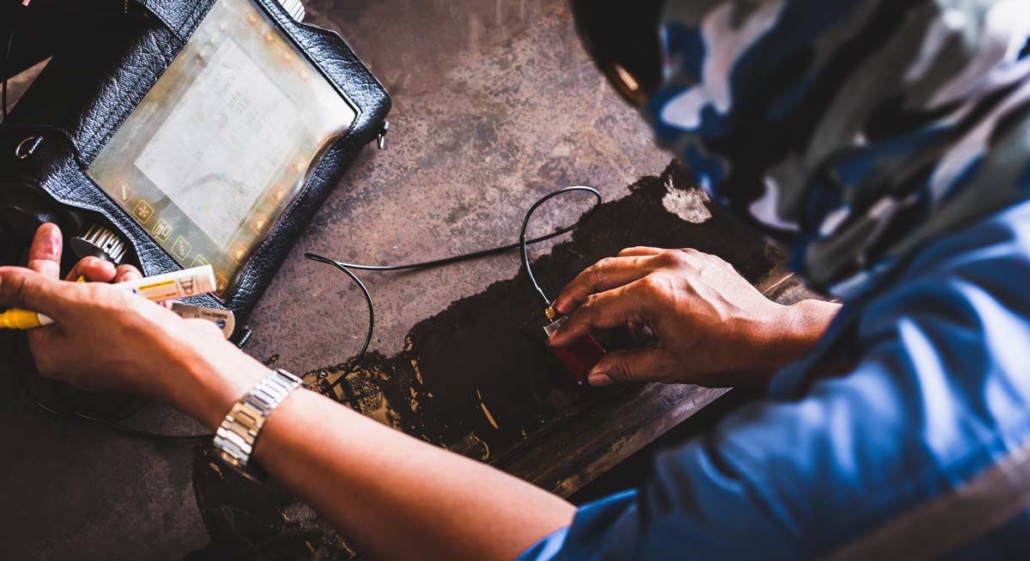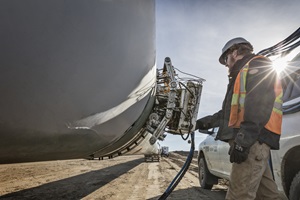
Finest Practices for Pipeline Welding Assessment: Strategies, Specifications, and Treatments to Accomplish Quality Assurance and Compliance
Effective pipe welding assessment is important for ensuring the honesty and security of critical infrastructure. By using a combination of strategies such as aesthetic examination and progressed non-destructive testing approaches, together with adherence to established industry criteria like those from ASME and AWS, organizations can significantly improve their quality control processes. However, the implementation of these best practices presents various difficulties that warrant careful factor to consider. Recognizing the complexities associated with each phase of assessment is important to accomplishing conformity and reliability in pipeline systems. What details methods can be employed to navigate these obstacles efficiently?
Value of Welding Inspection
The stability of bonded joints is paramount in making sure the safety and security and reliability of pipe systems. Appropriate welding techniques and extensive assessment processes are vital to avoid failures that can cause catastrophic occurrences, environmental damages, and death. Pipeline Welding Inspection. Welding examination serves as a safety net, identifying defects such as splits, porosity, and incomplete blend before they rise right into major problems
Furthermore, pipe systems often operate under high pressure and extreme conditions, making the quality of welds much more vital. Governing compliance is an additional considerable element, as various requirements determine the top quality assurance processes that should be stuck to in pipe building and construction and maintenance. Failure to conform can result in lawful implications and economic losses.

The duty of welding evaluation prolongs beyond plain confirmation of workmanship; it incorporates the guarantee of long-term operational integrity. This involves a methodical technique that includes not just visual evaluations yet also progressed non-destructive testing techniques. Inevitably, reliable welding examination is an investment in the long life and safety and security of pipe systems, guaranteeing they operate as meant while reducing risks associated with product deficiencies.
Secret Inspection Methods

Aesthetic evaluation, usually the first line of defense, enables the identification of surface issues such as splits, damages, and porosity. Ultrasonic testing utilizes high-frequency audio waves to identify interior flaws, supplying a complete assessment of weld integrity. This non-destructive approach is especially effective for identifying stoppages that might not show up externally.
Radiographic testing includes the usage of X-rays or gamma rays to generate photos of the welded joint, exposing internal defects. This method offers comprehensive understandings but might call for specific equipment and security considerations. Last but not least, magnetic fragment testing is effective for detecting surface and near-surface gaps in ferromagnetic materials, using magnetic fields and great iron fragments.
Market Requirements and Laws
Compliance with industry standards and laws is important for guaranteeing the top quality and security of pipe welding examinations. These standards provide a structure for finest practices in welding procedures, products, and evaluation methods, permitting organizations to reduce flaws and boost the honesty of pipe systems. Trick bodies such as the American Society of Mechanical Engineers (ASME), the American Welding Culture (AWS), and the International Company for Standardization (ISO) set forth standards that are commonly identified and taken on within the market.
In the United States, regulations from the Pipe and Hazardous Materials Safety Administration (PHMSA) govern the safety and security of pipe operations, mandating strenuous assessment methods. These standards not only serve to shield public security and the setting but additionally more ensure compliance with legal and lawful commitments. Adherence to the appropriate codes, such as ASME B31.3 for procedure piping, is important for preserving functional performance and regulatory compliance.
Moreover, continuous updates and modifications to these standards reflect technological developments and progressing market practices, stressing the requirement for companies to remain educated and train personnel appropriately. Eventually, durable compliance with established requirements promotes trust fund and reliability in pipe facilities, protecting both possessions and stakeholders.
Reliable Evaluation Procedures
Effective examination procedures are important for determining potential defects in pipeline welds and making sure the total stability of the system. An organized strategy to inspection incorporates numerous essential stages, consisting of pre-weld, in-process, and post-weld assessments. Each stage plays an important role in preserving top quality assurance.
During pre-weld inspection, it is important to review the materials and joint setups, making certain compliance with job requirements. In-process examinations involve keeping an eye on welding strategies and parameters, such as warmth input and take a trip speed, to avoid defects from happening. This phase permits real-time changes to welding techniques.
Post-weld assessments include non-destructive testing (NDT) methods like radiography, ultrasonic testing, and magnetic bit testing. These techniques assist find internal and surface area defects that could endanger the pipe's capability. Documents of all evaluation tasks is extremely important, offering a traceable document that supports conformity with sector requirements.
Educating and qualification of evaluation workers further improve the efficiency of these procedures. By adhering to a structured assessment method, organizations can reduce risks, ensure compliance, and eventually supply pipelines that fulfill rigorous safety and efficiency needs.
Typical Challenges and Solutions
Pipe welding inspection offers several typical difficulties that can impact the high quality and security of the end product. One significant difficulty is see this page the variability in welding methods and products, which can bring about inconsistent weld high quality. To resolve this, it is important to establish standard treatments and training for welders, making certain an uniform approach throughout projects.

Ecological elements, including temperature and humidity, can also influence the welding process, possibly leading to splits or incomplete combination. Implementing regulated atmospheres and adhering to pre-weld procedures can alleviate these risks.
Final Thought
In final thought, the application of best practices for pipe welding examination is essential for my latest blog post making sure quality control and conformity with industry requirements. A thorough method, integrating different strategies such as aesthetic, ultrasonic, and radiographic testing, assists in the identification of problems throughout all stages of the welding process. Pipeline Welding Inspection. Adherence to established laws and efficient examination procedures not just boosts the dependability and security of pipe systems yet likewise mitigates threats related to welding flaws, thus advertising general functional stability
Compliance with industry requirements and policies is crucial for ensuring the top quality and safety of pipeline welding assessments. These standards give a structure for ideal techniques in welding procedures, products, and inspection methods, allowing organizations to minimize problems and boost the honesty of pipe systems.In the United States, guidelines from the Pipeline and Hazardous Materials Safety And Security Management (PHMSA) regulate the security of pipeline operations, mandating rigorous inspection procedures. A systematic strategy to inspection incorporates several crucial phases, including pre-weld, in-process, and post-weld examinations.In final thought, the implementation of ideal techniques for pipe welding assessment is essential for guaranteeing quality assurance and compliance with sector criteria.